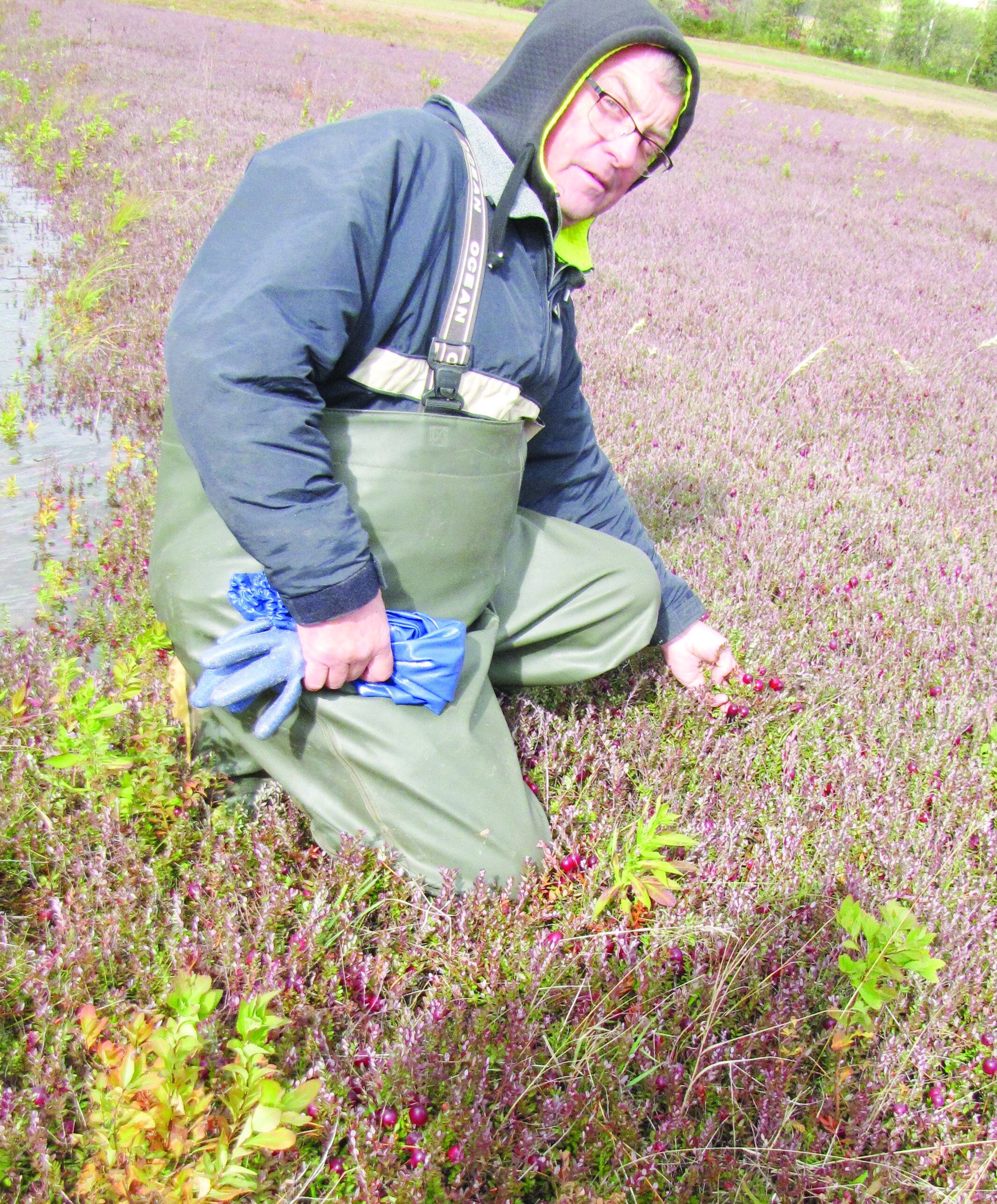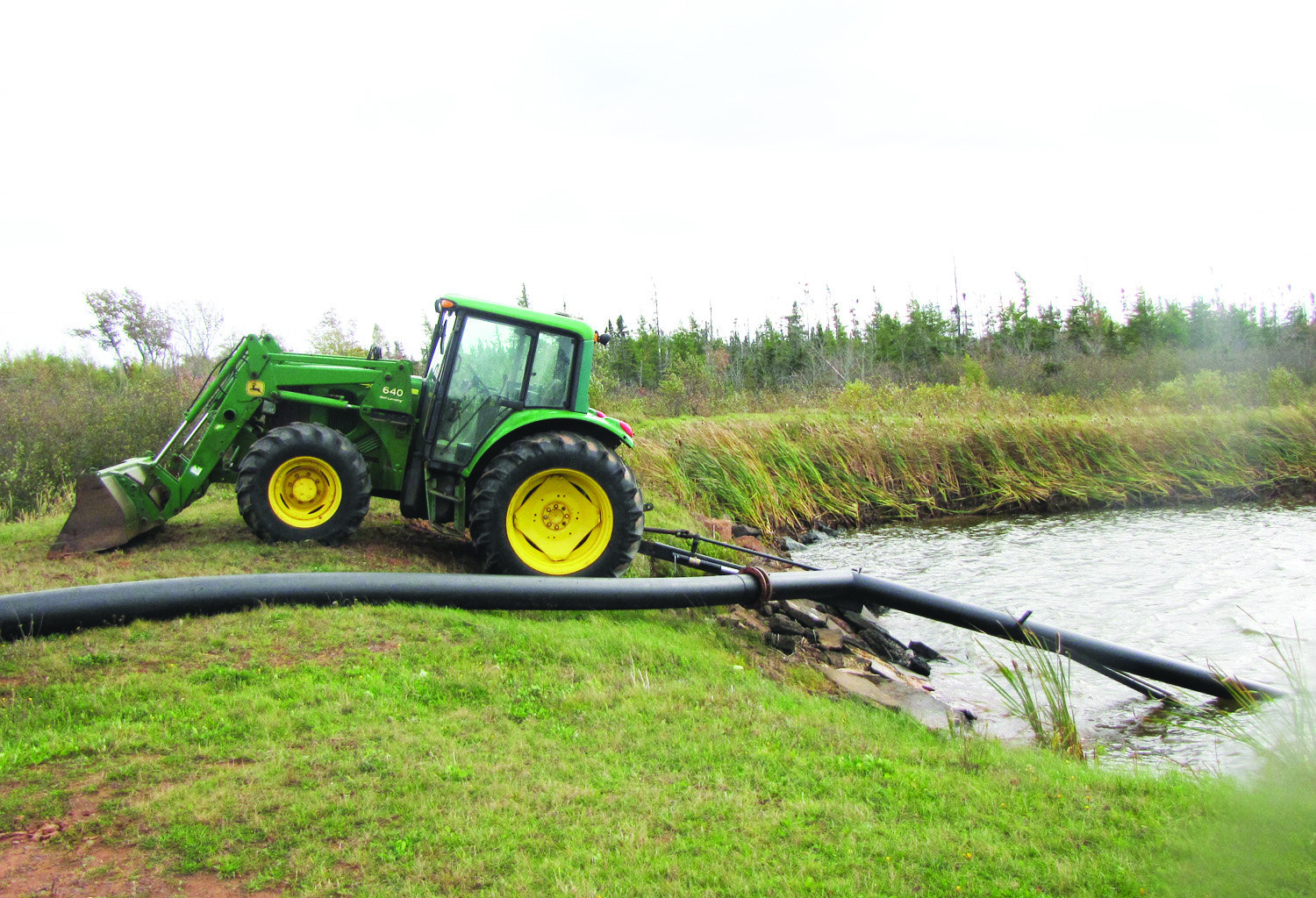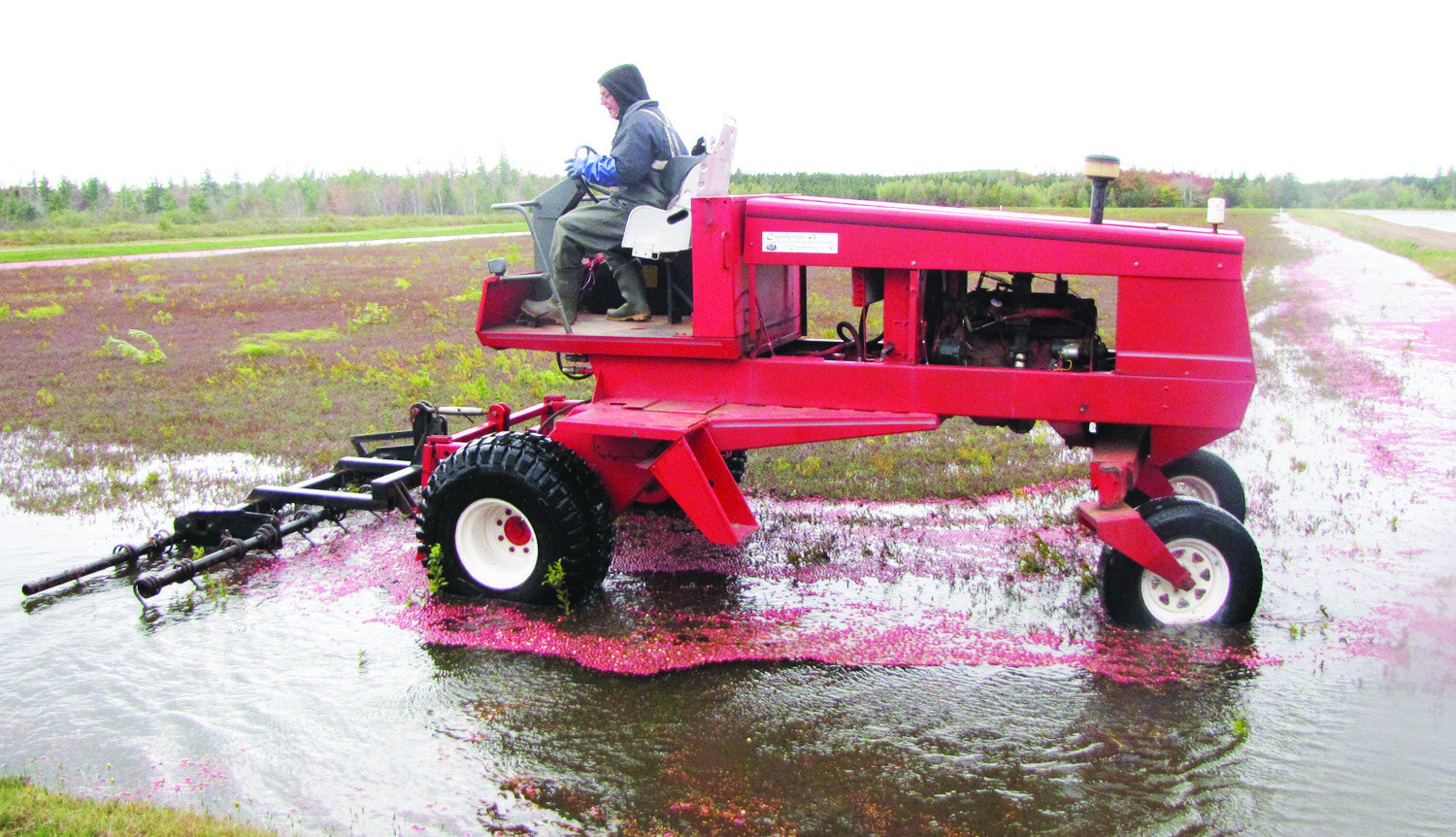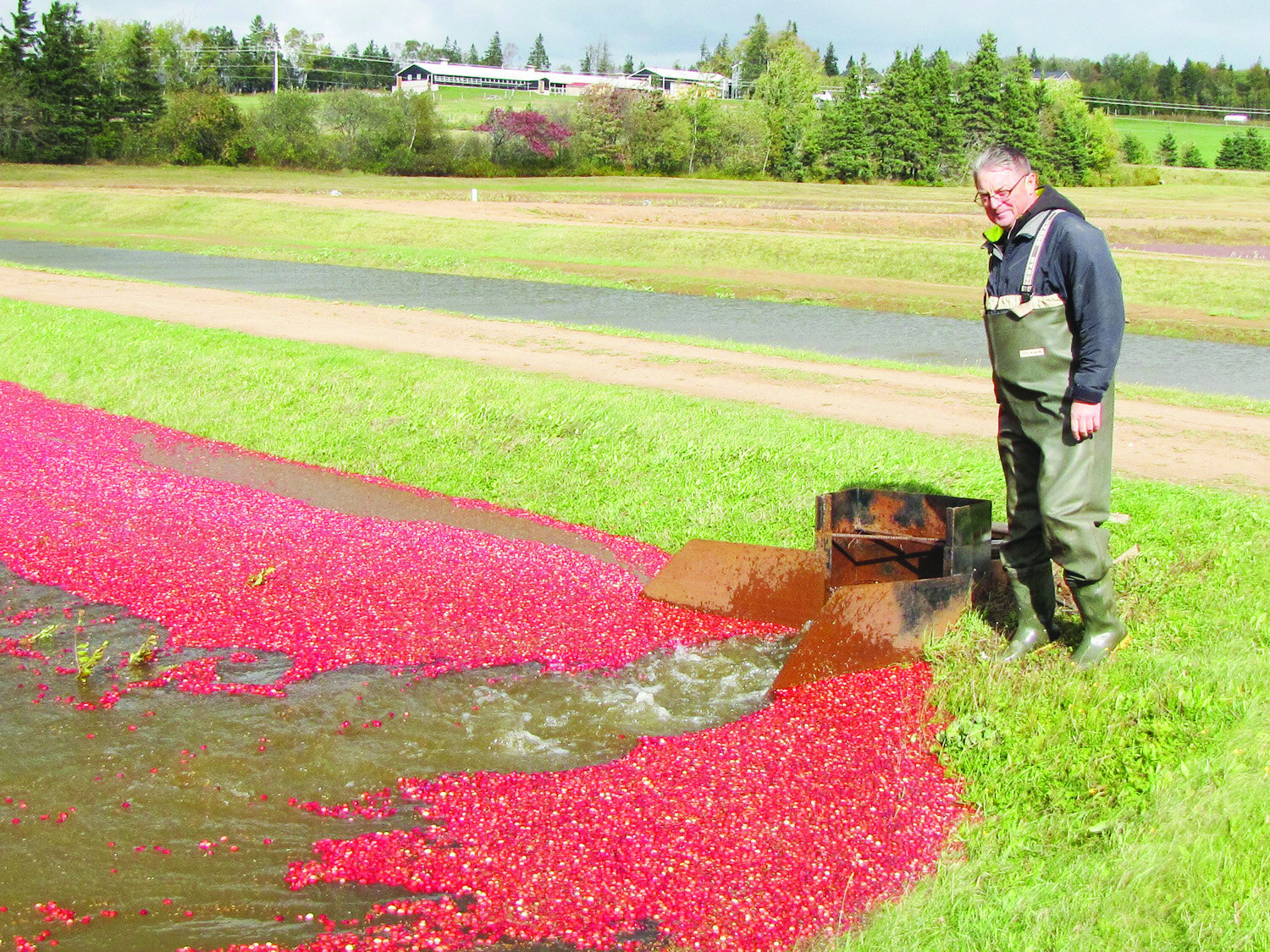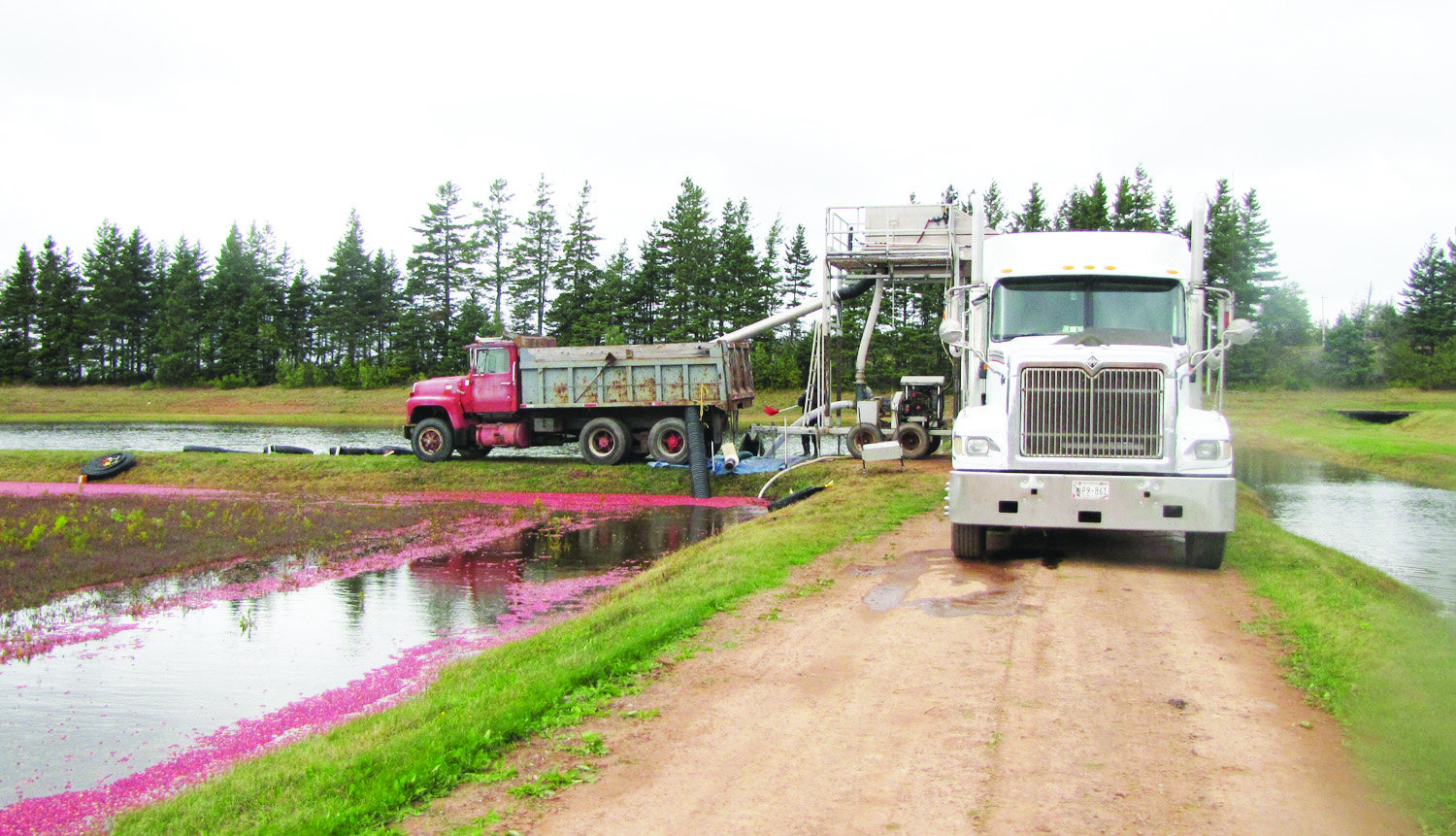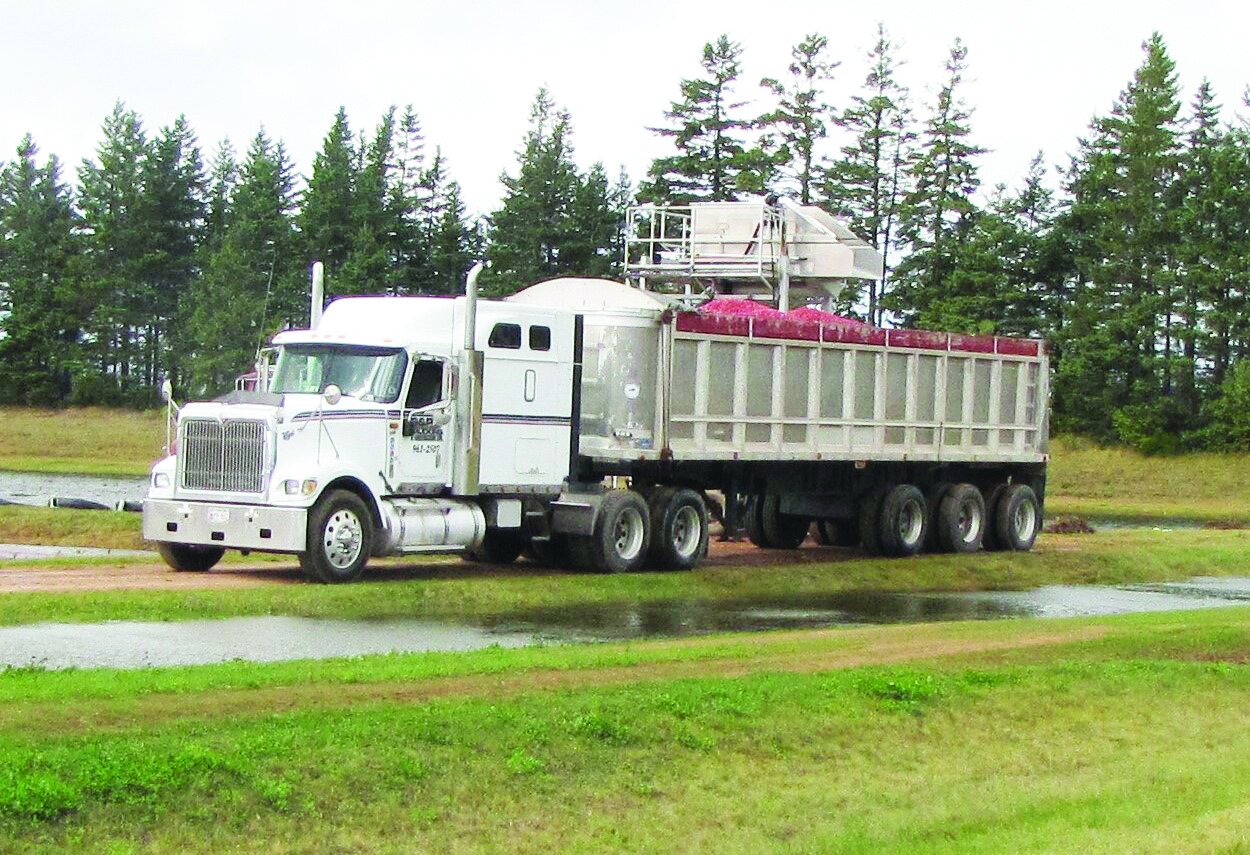Island cranberry growers harvest fruits of their labour
/by Kathy Birt
Mike and Lolita Whitty have invested a lot more than money in their Mikita Farms cranberry operation in Farmington, P.E.I. The couple lives in St. Peters, just six miles from their bustling cranberry farm, and have beat the pavement back and forth many times since the year 2000 when they planted their first five acres.
They planted another five acres in 2003.
Ten acres may not seem like a big farm. But Mike Whitty said it costs about $50,000 to establish an acre of cranberries, adding that one acre will produce more than 30,000 pounds in a good year. He said theirs is the second-biggest cranberry farm on the Island, adding that P.E.I. producers grow about one million pounds of cranberries a year on 75 to 80 acres of land.
It takes three to five years to get a mature bed. “That’s if you have no problems,” said Whitty.
Cranberries can’t just be grown anywhere.
“We need level, flat land, which makes it easier to flood,” said Whitty, adding that a layer of sand is spread for a base in which the cranberry clippings are planted. “That layer underneath is what holds floodwater for harvesting.”
Mikita Farms grows the Stevens cranberry variety.
“It is easy to grow and a hybrid, juicy berry,” said Whitty. “It has a short seasonal maturity, excellent vigour, and a yield comparable to other commercial varieties.”
Mikita Farms brings in about 16 hives from a local bee producer to pollinate the cranberries after the region’s blueberry fields are pollinated in the spring.
Whitty added that weeds love to grow in warm, irrigated cranberry beds.
They control weeds by “weed wiping” – using a hand-held tool to apply Roundup to the weeds. “We wipe the weeds but don’t touch the cranberries with the chemicals,” said Whitty, adding that the grassy fields surrounding the cranberry operation are kept cut short to discourage insects.
Whitty explained the importance of having access to water for the cranberry crop.
Cranberries – which have a pocket of air inside them – form on low-growing, matted vines. Flooding a cranberry bed makes it easier for a harvesting machine to remove the cranberries from the vines. The dislodged cranberries float to the surface of the water and are loaded onto waiting trucks by way of a pump and a conveyor.
Mikita Farms pumps water from a nearby 17-foot-deep reservoir through a flume into the cranberry bed for harvesting, which takes place in the fall. The Whittys employ six to eight men during that time. And Whitty said people come from all over the Island to watch the harvest.
They also use water from the reservoir to protect the plants from frost in the spring and for irrigation when required. They use soil tensiometers, which measure soil moisture. “That will alert me, telling me the cranberries need to be irrigated,” said Whitty.
And they also flood the cranberry bed in the winter. The resulting ice protects cranberry vines and buds from winter injury. The Whittys also spread clean sand on the ice – which is called “sanding” – and is a common practice among cranberry growers. When the ice melts, the sand settles into the base of the bed, which helps smother weeds, bury insect pests, and stimulate root and shoot development.
Whitty said the price for cranberries was low in the early years of their operation and practices such as sanding often took a backseat.
“In the lower-price years, we couldn’t afford to do the sanding, even though it promotes growth and adds more poundage to the acre,” he said. “The sanding part of the operation is crucial to the growth.”
While cranberry prices have been as low as 13 cents per pound in the years since 2000, prices today are typically 40-45 cents per pound.
“That is still low,” said Whitty. “They should be at 75 cents or more.”
Lolita has been involved in the growth of Mikita Farms from the get-go. She takes care of the bagging and the roadside stand where some cranberries are sold to farm-gate customers.
The Whittys sell the bulk of their crop to the Wyman’s blueberry plant in nearby Morell, which began buying cranberries in recent years. For growers like the Whittys, that’s a positive. A steady market just down the road works to their advantage.
Wade Dover, general manager of the Wyman’s plant, said the plant purchases cranberries from a number of growers around the Island. The crop is cleaned and frozen at the plant.
“We ship them in 40-pound boxes to commercial markets,” adding that a good deal of the Island’s cranberry crop ends up in baked goods such as cranberry loaf and other baking needs. “And the cranberries are shipped all over the world.”
Mikita Farms also offers a value-added product in their Juice Boost cranberry juice, which is sold in one-litre containers.
“It’s pure cranberry – cold-pressed – and the consumer adds two parts water, one part juice to mix it,” said Whitty.
Their mature and diversified cranberry operation hasn’t come without a lot of hard work.
“I built all this bog here,” said Whitty, as the fruits of their labour were loaded onto trucks this fall. “And to make it successful, you gotta work at it.”

